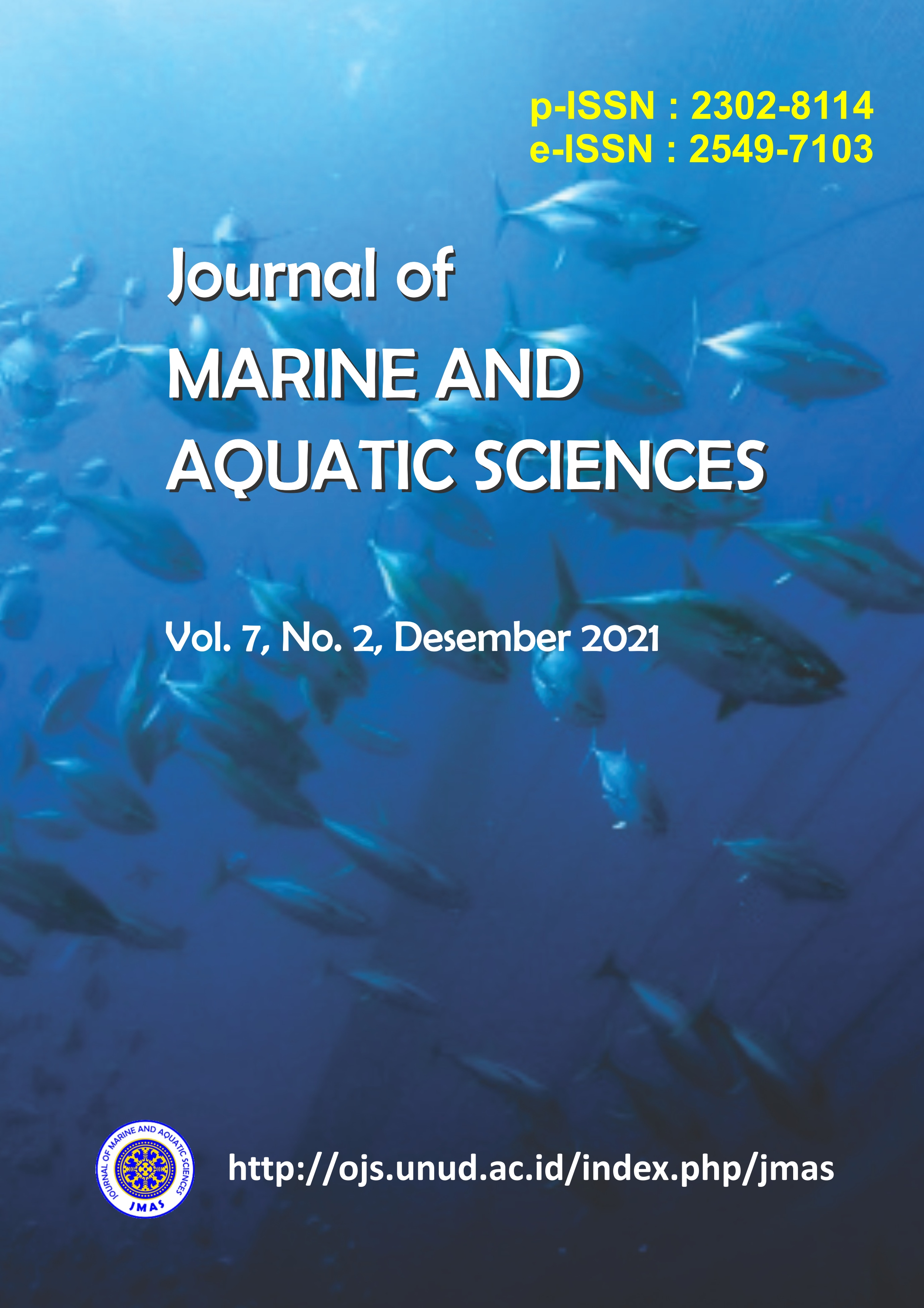Perbandingan Laju Pertumbuhan Abalon (Haliotis squamata) Menggunakan Metode Co-culture Dan Monoculture di Pantai Geger, Nusa Dua, Kabupaten Badung, Bali
Abstract
This research was conducted at Geger Beach, Nusa Dua, Bali for 60 days. The purpose of this study was to find out the ratio of abalone growth rate (Haliotis squamata) to co-cultured and monoculture cultivation systems in Geger Beach waters, Nusa Dua, Bali, knowing that abalone stocking densities were more effective in culture systems and knowing more abalone stocking densities effective on monoculture systems. The method used uses the Complete Randomized Design (CRD) method which consists of four treatments with each treatment there are three repetitions. The treatment of Haliotis squamata abalone shells which is integrated with dense stocking differs from planting the same seaweed. The test animals were stocked with each basket with a density of 40 tails and 20 tails. The food given for abalone is cotoni sp. which is where seaweed cotoni sp. obtained from cultivation. Based on the comparison of the growth rate of abalone (Haliotis squamata) in co-culture and monoculture cultivation in terms of abalone length with stocking density 20 of the co-culture cultivation system obtains the highest length value of 2.50%, while the co-culture cultivation system with stocking density 40 gets the value the highest is 4.19%. At the weight of the Haliotis squamata abalone with the co-culture cultivation system at 20 stocking densities, the highest value was 0.04% and 40 highest stocking densities on the co-culture system at 1.04%. At the length of the abalone Haliotis squamata with 20 thick stocking monoculture systems got the highest value of 7.63%, while the highest stocking density of 40 was 1.28%. On abalone weight monoculture system with 20 density has the highest value of 2.67%, while 40 density has the highest value of 0.48%.
Downloads

This work is licensed under a Creative Commons Attribution 3.0 International License.
Copyright 2012 - 2023 Journal of Marine and Aquatic Sciences (JMAS)
Published by Fakultas Kelautan dan Perikanan Universitas Udayana, Denpasar, Bali, Indonesia
JMAS (p-ISSN 2302-8114; e-ISSN 2549-7103)


